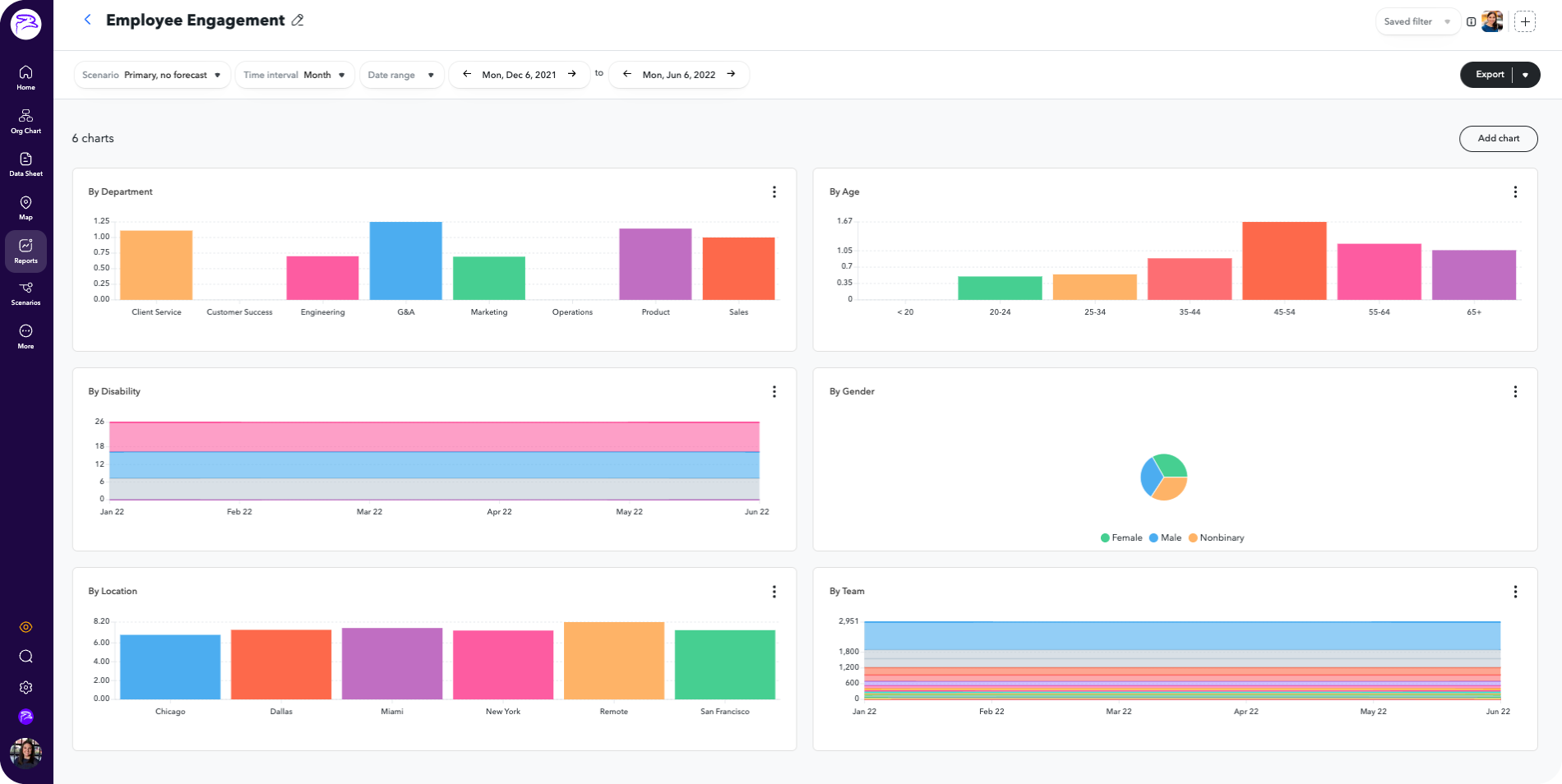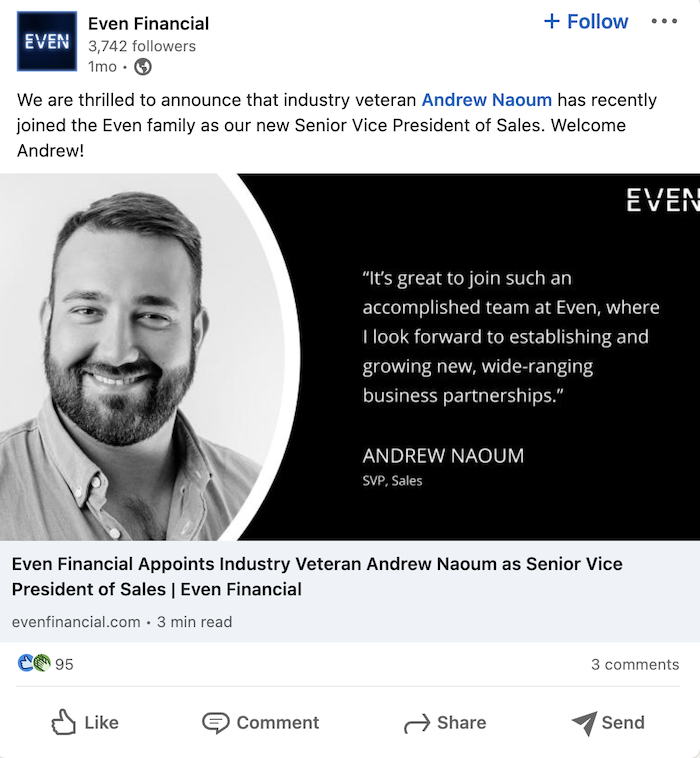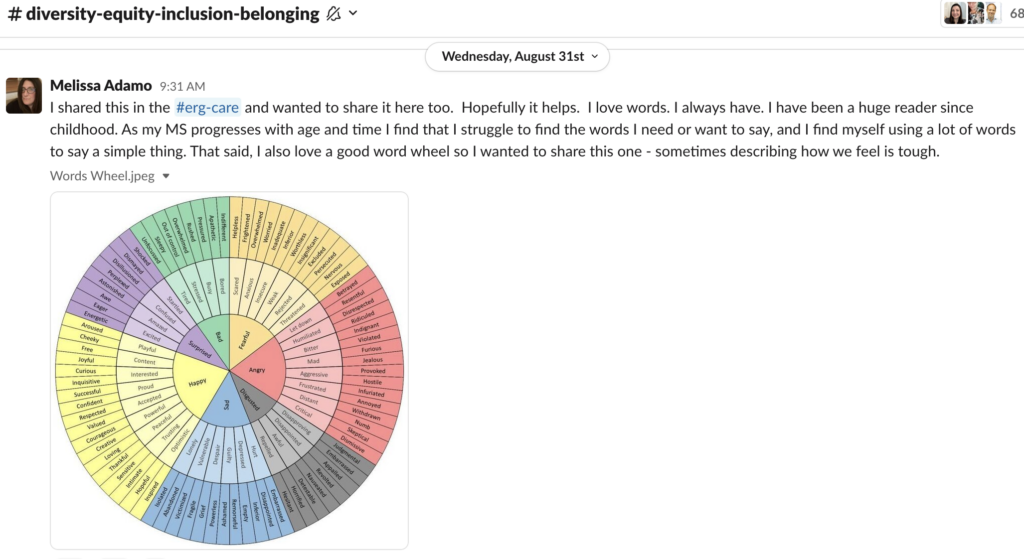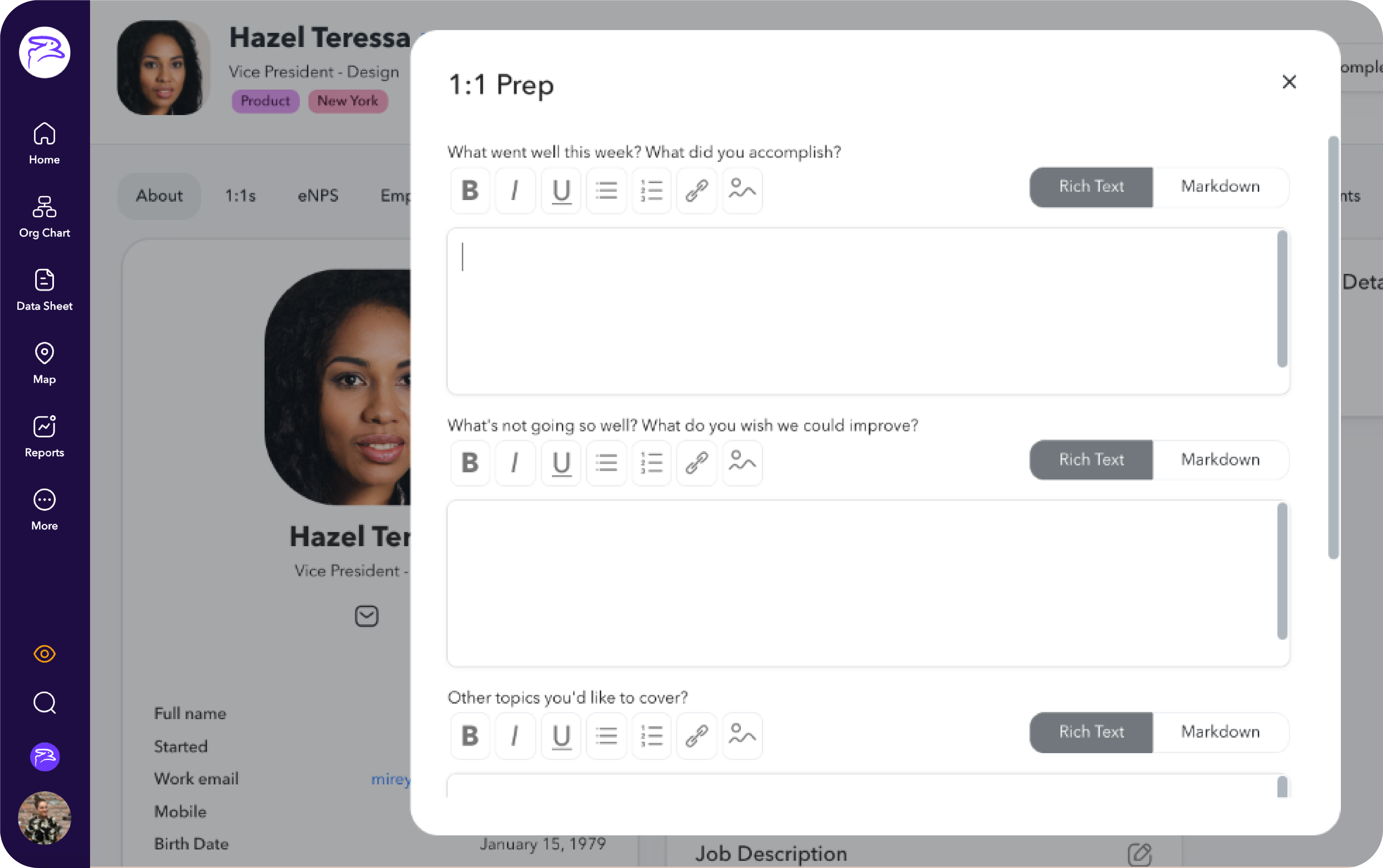
Gone are the days when a company’s achievements hinged solely on its products or services. We’re instead living in an era where people are the driving force behind every company’s success. As people-first leaders, that’s good news.
We already understand that the foundation of company success lies within the talented employees who dedicate their skills, passion, and creativity to move the organization forward. We also know that having a defined people strategy isn’t just an obligation, but an absolute necessity in our fast-paced and competitive environment.
It’s therefore critical for organizations to recognize the significance of having (or building) a cohesive and future-oriented people strategy.
A people strategy is a comprehensive plan that guides every aspect of the employee-employer relationship. From recruitment to offboarding, a people strategy sets the stage for attracting, engaging, training, and retaining talented employees in the modern workplace.
An effective people strategy should enable a business to:
Does the above sound a little more modern than traditional HR practices? That’s because it is. In today’s ever-evolving business landscape, it is essential for leaders to think strategically about modern HR practices, as compliance-and-policy-driven HR alone cannot effectively address all the changes necessary to attract and retain your people.
Luckily, people operations (with a comprehensive people strategy) provides a pathway to supplement traditional HR roles with more forward-thinking and data-driven initiatives that enhance employee experiences.
Here’s the thing: simply having a people strategy won’t cut it. You need an effective people strategy that fuels your organization’s growth and propels it to new heights. But how do you go about building one that truly resonates with your employees and aligns with your business goals?
That’s where the collective expertise of People leaders comes into play. By working hand-in-hand with your C-suite, managers, and Finance team, you can develop a people strategy that not only keeps everyone on the same page, but also helps drive the overall success of your organization. Additionally, as stakeholders come together, it’s important to communicate what you want to accomplish with your people strategy and keep these goals top of mind to ensure everyone stays focused.
Are you ready to revolutionize your approach? Below are four ways to build a successful people strategy that drives business success.
In a world where the employee experience reigns supreme, People teams must put people at the center of all employee interactions.
Take a page from Airbnb’s book, who rebranded the CHRO role in 2015 as the Global Head of Employee Experience. Spoilers ahead: this shift paid off. Shortly afterward, Glassdoor named Airbnb the best place to work based on employee reviews.
Mark Levy, who took that role, sums up the goals of an employee experience function like this: “Increasing employee engagement, decreasing turnover and, most importantly, improving performance as it relates to customer satisfaction and driving business goals.”
Furthermore, McKinsey research emphasizes the impact of the employee experience on organizational success, finding that “successful organizations work together with their people to create personalized, authentic, and motivating experiences that tap into purpose to strengthen individual, team, and company performance.” Ultimately, when your workforce feels valued, engaged, and supported, they go above and beyond to exceed expectations.
Here are a few examples of how you can provide a better employee experience:

Choose a modern people operations platform to help store and view your people data in one place. Less spreadsheet wrangling, more acting on insights.
Crafting a solid employer brand is your key to attracting the talent of tomorrow. People now turn to social media, reviews, and employee-generated content to get a glimpse behind the curtain of your company culture.
A study in the Journal of Vocational Behavior finds organizations with active, comprehensive social media pages that communicate their “employer brand personality” appear more attractive to candidates. Critically, one survey of 1,096 employees found one in three Americans turned down a job offer due to a negative review. Let that statistic sink in.
To take action, join forces with your marketing department and create a comprehensive employer brand program. Leverage social media platforms like Twitter and LinkedIn to share your company’s personality and industry expertise and even automate personalized messages to top candidates. Engage with your audience, respond to employee reviews, and let your authentic employer brand shine.
Remember, a strong employer brand attracts talented candidates who align with your company culture and values. Even Financial is an excellent example of an organization that’s mastered this art. They leverage social media platforms to communicate their passion, industry leadership, and commitment to their workforce.

According to a survey by EY, executives armed with a strong sense of purpose are 63.4% better equipped to conquer disruption head-on. Professor Rebecca Henderson from Harvard Business School couldn’t agree more: “The sense of being part of something greater than yourself can lead to high levels of engagement, high levels of creativity, and the willingness to partner across functional and product boundaries within a company, which are hugely powerful.”
Ever wondered how industry titans like Spotify became the epitome of purpose-driven organizations? Here’s their secret: Spotify takes their mission and goals and broadcasts them loud and clear to every single employee. It’s all about rallying the troops around a shared objective, igniting motivation, and empowering each “Spotifier” to understand their unique contributions and impact.
If you’re ready to put purpose into practice, you first need to identify your organization’s core values and mindset. And guess what? Your employees hold the key to this treasure trove of insights. Follow Spotify’s footsteps by conducting engaging workshops where your people share their values and motivations. This invaluable feedback will lay the foundation for your purpose.
Once you’ve unlocked your purpose, it’s time to turn it into action. Let’s say your organization’s purpose revolves around building a more inclusive tech industry. An excellent norm to establish might be having product designers work closely with underrepresented communities. This alignment between purpose and behavior will be the North Star guiding your organization to extraordinary heights.
 |
One of the best ways to ensure your company lives its values is to model that behavior. Above, Melissa Adamo of ChartHop’s People team shares a resource via Slack that helps create an inclusive environment.
A modern People strategy’s success hinges on the skills and talent of your workforce.
Companies like Dell place employee achievement at the center of their people philosophy. Jenn Saavedra, Dell Technologies’ Chief HR Officer, says: “We want to enable people to achieve their career goals, to be successful, and continue to grow and learn and perform.” The company uses data such as industry trends and in-house technical skills requirements to identify and close skills gaps. Further, each employee has an individual learning plan.
It’s important to note that there’s no one-size-fits-all approach for employee development. However, popular methods include workshops, on-the-job training, and mentoring.
Other ideas include:
Overall, providing employees opportunities to learn and grow further helps them contribute to the company’s success in valuable ways.

Support your people strategy with standardized forms for your regular 1:1 meetings. With it, your people can see past notes all in one place, and can guide the conversation how they best see fit.
A well-crafted people strategy plays a pivotal role in driving your organization’s success. It’s not just about filling positions or checking off boxes; it’s about harnessing the full potential of your workforce.
And luckily, you have the unique opportunity to shape the employee experience, showcase your work externally, foster a culture of purpose and growth, and invest in skills development. By taking a proactive and forward-thinking approach, you can create an environment where employees feel motivated, engaged, and valued. Remember, your people are your most valuable asset, and a people strategy that prioritizes their well-being and professional growth will yield remarkable results.
Sign up for a free demo today.